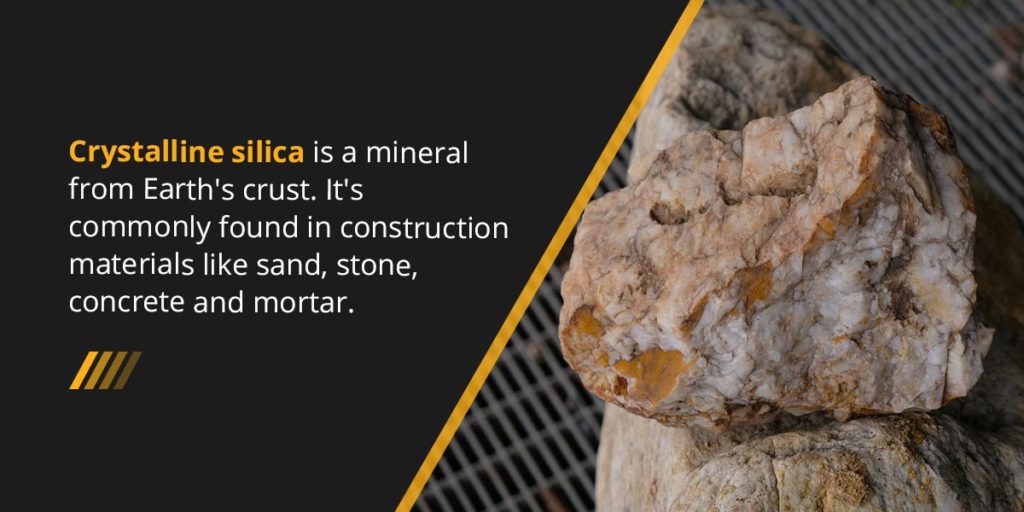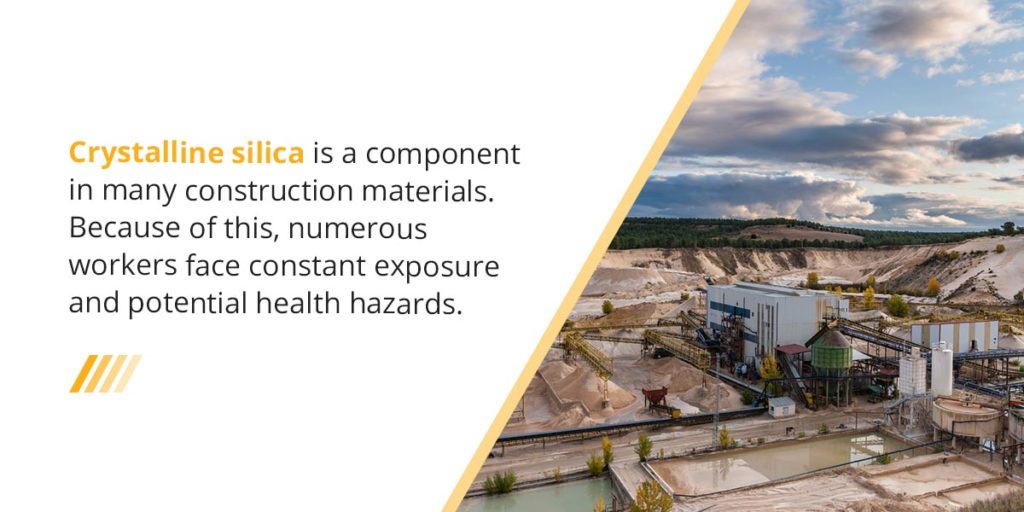**New OSHA Silica Exposure Rules**
Updated: December 22, 2023
Exposure to crystalline silica has long been a known risk in many industries, especially construction. The Occupational Safety and Health Administration (OSHA) has implemented updated standards to further reduce the permissible exposure limits and better protect workers from the harmful effects of respirable silica.
At Finishing Systems, we prioritize the safety and well-being of our employees and customers. Staying informed about industry changes is essential for maintaining a safe working environment. If you have questions or need more information on the revised silica standards, we recommend visiting OSHA’s official website or using their On-Site Consultation Program for expert guidance. This program helps businesses identify and mitigate silica-related risks and other workplace hazards.
The new standards apply to two main groups:
1. **Construction workers**
2. **General industry and maritime workers**
While the construction standard became effective on September 23, 2017, the general industry and maritime rule took effect on June 23, 2018. These rules apply to workers who handle loose silica products, such as during blasting, abrasion, or foundry work, as well as those who perform tasks that generate airborne silica dust, like cutting, grinding, or crushing concrete, stone, or brick.

**What Is Crystalline Silica?**
Crystalline silica is a naturally occurring mineral found in the Earth's crust. It is commonly present in construction materials like sand, stone, concrete, and mortar. It is also used in products such as glass, ceramics, and pottery.
There are three main forms of crystalline silica:
- **Quartz:** The most common and abundant form, often found in rocks and used extensively in construction.
- **Cristobalite:** A rare form typically found in volcanic rocks or formed when quartz is heated at high temperatures.
- **Tridymite:** Another rare form, rarely encountered in the workplace.
When these materials are disturbed, they can release fine silica dust into the air, which can be inhaled and cause serious health issues.

**How Are Workers Exposed to Crystalline Silica?**
Workers are exposed to crystalline silica through various tasks involving materials like stone, brick, concrete, and mortar. Activities such as cutting, drilling, grinding, and abrasive blasting can create respirable silica dust. This dust can be inhaled and lead to severe lung diseases.
Common tasks that expose workers include:
- Using power tools like saws, drills, and jackhammers
- Operating demolition equipment
- Performing abrasive blasting
- Tunneling or excavation
OSHA estimates that over 600,000 workplaces are exposed to respirable silica each year. Long-term exposure can lead to life-threatening conditions such as silicosis, lung cancer, COPD, and kidney disease.
**OSHA Silica Exposure Standards**
OSHA’s standard 1926.1153 sets limits on exposure to respirable crystalline silica and requires employers to implement protective measures. This includes developing an exposure control plan, assigning a competent person to oversee compliance, providing medical exams, training workers, and keeping detailed records.
For example, if a worker uses a saw outdoors for less than four hours, a respirator may not be required. However, if the task is done indoors or for longer periods, additional protection is necessary.
**Solutions for Crystalline Silica Inhalation**
To reduce the risk of inhalation, employers should use a combination of engineering controls, administrative practices, and personal protective equipment (PPE). This can include:
- Respirators and masks
- Dust collection systems
- Regular cleaning and removal of silica dust

**Protecting Workers With Help From Silica Exposure**
At Finishing Systems, we take employee safety seriously. We recently conducted monitoring and professional testing to ensure a safe working environment.
If your company needs help protecting workers from silica exposure, contact us for a wide range of safety equipment and supplies. Our extensive product line is designed to safeguard your most valuable asset — your employees.
**SHARE:**
Emulsifier Mixer,Vacuum Emulsifier,Vacuum Homogenizer Mixer,Vacuum Homogenizer Mixer
wuxi top mixer equipment co.,ltd , https://www.wxtpmixer.com